How to choose a gas heater
Sometimes, when the use of electrical heating or the installation of stationary heating for some reason is undesirable or impossible, people are looking for alternative options. One such option would be heating with gas heaters. In this article we will describe how to choose a gas heater.
Features of gas fuel

Liquefied propane-butane gas mixture or natural gas emits carbon monoxide after combustion. It consists not only of hydrocarbons, but also other impurities, including sulfur oxide and hydrocyanic acid. Getting such a pollutant into a room at a certain concentration can not only harm health, but also kill a person. Therefore, the issue of removal of waste from the room is one of the main issues when installing a gas heater. This also significantly narrows the scope of such devices.
At the state level, standards have been developed for the installation of gas heaters and the installation of chimneys for them.
Most reasonable is their use in well-ventilated single buildings, and in apartments of high-rise buildings is highly undesirable. This is due to the difficulties of arranging the chimney.
Kinds
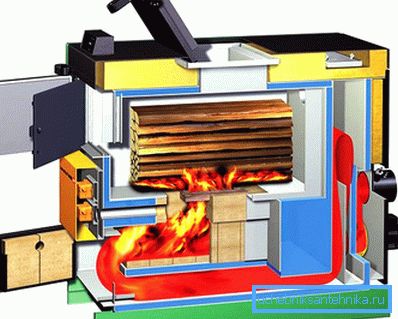
First of all, it is necessary to have an idea about the model range and design of each device. So, manufacturers offer:
- gas convector;
- portable heaters;
- catalytic gas heaters;
- infrared ceramic gas heaters;
- heat guns.
Design features

Each type of gas heater has its pros and cons. What they have in common is that the cost of gas fuel is still lower than electricity (at equal instrument capacities). The use of gas heaters does not require additional work to increase the power of substations and the “throughput” leashes. There is also no need to bring the water coolant, which greatly simplifies the situation when the room in the cold for a long time remains without heating.
Gas convector
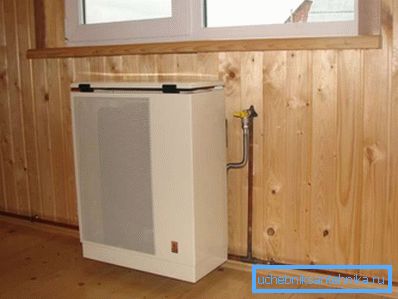
It consists of a pipe that “sucks” the air outside and a second pipe through which the exhaust gases are “emitted”. For installation of pipes in the wall make a through hole. All joints: pipes with a wall and the device are insulated to avoid heat leakage and exhaust gases. In addition, a kind of cast iron or steel tank is built into the device. Gas burners heat this tank, and through special air intakes the “room” air blows the tank, heats up and is “released” back into the room, thereby warming it up. No need to bring the coolant, hang the batteries, and then be afraid that all this will freeze if the heating is turned off. You can just come and turn on the heater. True, there is one major drawback - a large gas consumption. But you can connect not only a stationary gas pipeline, but also bottled gas. In the latter case, it is better to have a few cylinders in reserve.
Gas convector can heat rooms of 20–30 m2. Perfect for summer cottages of medium size, consisting of a pair of rooms. If there are more rooms, then other rooms will have to be heated with additional devices.
Portable heater
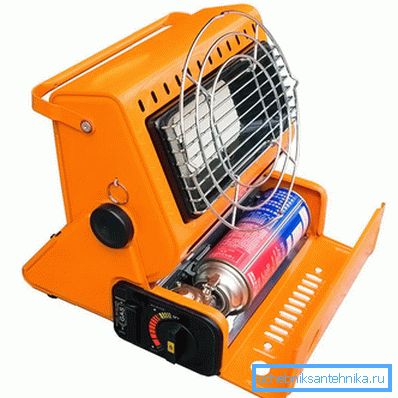
Such heaters have compact dimensions and a small amount of fuel with them. Gas cartridge is built directly into the housing of the device. But they are easy to transfer from one place to another, they are economical. Perfect for short-term heating of a small room, for example, gazebos on the street.
Catalytic gas heater
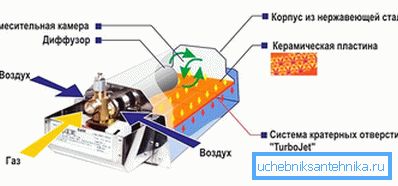
It is a type of infrared heater. It consists of a catalytic burner, designed in such a way that in it the gas is oxidized without flame, therefore, the device works without noise. The first heaters had burners made of fiberglass and platinum powder alloy. New models are equipped with more expensive burners, which have greater efficiency and operate on the principle of deep burning. The fuel used is a bottled liquefied gas mixture of propane and butane. Use cylinders with a capacity of 5 or 7 liters. The average power is 5 kW and the temperature is 600 ° C.
Such a device can heat up a room no more than 20 m.2. Apply for heating not only country houses, but also warehouses and garages.
Infrared Ceramic Gas Heater
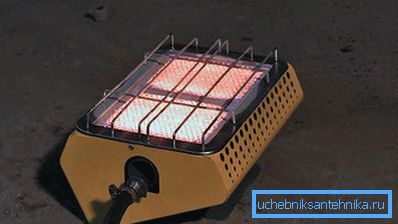
In its design laid gas ceramic burner with an open flame. The power of such a heater is slightly higher due to the burning temperature, which is 800 ° C. By using a fan, you can increase the performance of the device by using it to heat sufficiently large areas. But at the same time, it is a little more “gluttonous” than the catalytic heater.
The device is not very mobile, because it is supplied with liquefied gas from cylinders with a volume of 7-12 liters.
Heat gun
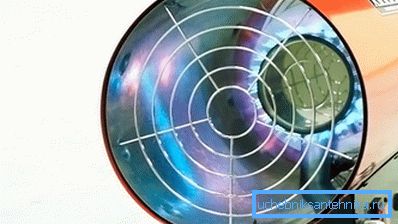
This type of heaters looks like a large pipe, on one side of which a fan with blades of fireproof material (mainly ceramics) is mounted from the inside. Ring-shaped nozzles are installed along the inner perimeter of the pipe. They brought gas. When the flame burns, it heats the air inside the gun to a fairly high temperature, and the fan blows this air out with a strong flow.
Such devices very quickly heat large hangars and they can be used as street heaters even at very low temperatures. In residential areas are not used due to the large amount of oxygen burned during combustion.
Selection features
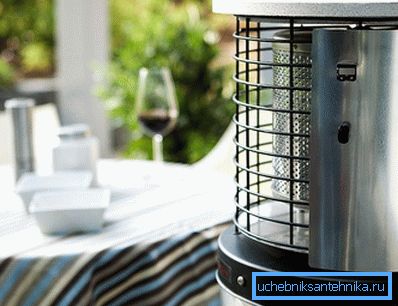
Since all heaters are selected on the basis of power, and its unit is reduced to a single value: kilowatt, then the heat output of one kilowatt must be guided. Ratio one to ten. In addition, the choice of the device depends on the purpose for which you purchase it, and what type of gas you can use: stationary or balloon.
Security

Since gas appliances for any purpose are traditionally considered to be an increased risk group, some people are wary of heaters. You can relax here: the manufacturers of any device laid several degrees of protection in the design of their models, which make them completely safe. It is enough just to operate them in accordance with the instructions.
Video
This video covers different types of gas heaters, also provides average prices for devices and their further maintenance, which will help you to be more objective when choosing a heater: